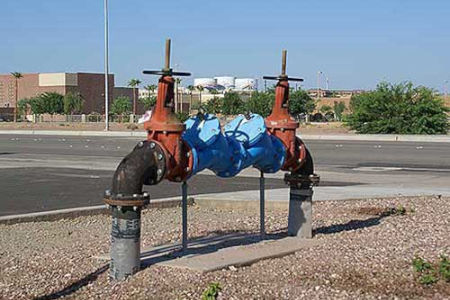How Backflow Preventers Work: Everything Homeowners Should Know

Clean water is essential for every household, and protecting that water from contamination is a top priority. One device that plays a critical role in this protection is the backflow preventer. Whether you're new to homeownership or just brushing up on your plumbing knowledge, understanding how these systems work can help you keep your water safe and your plumbing up to code.
What Is Backflow?
Backflow is a plumbing term that describes the unwanted reversal of water flow in a plumbing system. This reversal can cause contaminated water from sources like garden hoses, irrigation systems, or even toilets to flow backward into your home’s clean water supply. There are two primary causes: backpressure and backsiphonage.
Backpressure occurs when downstream pressure (from boilers, pumps, etc.) exceeds the supply pressure.
Backsiphonage occurs when there's a sudden drop in water supply pressure, such as during a mainline break or when firefighters use a hydrant.
Both situations can pull contaminants into your drinking water—making a backflow prevention device not just a good idea but a necessity.
How Do Backflow Preventers Work?
Backflow preventers are specially designed plumbing valves that allow water to flow in only one direction. They are installed on water lines to stop potentially contaminated water from re-entering the clean water supply.
The most common types of backflow preventers include:
- Atmospheric Vacuum Breakers (AVBs): Typically used on irrigation systems, these devices prevent back-siphonage but are not suitable for continuous pressure applications.
- Pressure Vacuum Breakers (PVBs): These handle constant pressure and are commonly installed in sprinkler systems.
- Double Check Valve Assemblies (DCVAs): These are used in both residential and commercial settings to protect against backpressure and backsiphonage.
- Reduced Pressure Zone (RPZ) Assemblies: These offer the highest level of protection and are often required in systems with hazardous materials.
Each device includes one or more check valves and relief valves to ensure contaminated water doesn’t travel upstream. When functioning properly, these components shut off reverse flow instantly.
Why Are Backflow Preventers Important?
Aside from protecting your family’s health, backflow preventers are often required by city ordinances or water providers—especially if you have irrigation systems, pools, or complex plumbing layouts. Failure to install or maintain a backflow preventer could result in contaminated water, plumbing damage, or even legal penalties.
Routine inspection and testing are essential to ensure your backflow preventer is operating as it should. Many municipalities require annual testing by certified professionals, making it important to choose top-rated Phoenix backflow services that can handle installation, testing, and repairs.
Choosing the Right Professional
Proper installation is key. Hiring a plumber experienced in backflow services ensures your system is not only compliant with local codes but also optimized for your home’s specific needs. The right technician will help you determine which type of device is required and install it in a way that minimizes disruption to your property.
Protect your water and stay compliant with expert backflow services in Phoenix—trust Backflow Paradise Inc. to get the job done right.

We Are the Phoenix Backflow Professionals You Can Trust
Get Your Free Estimate Today